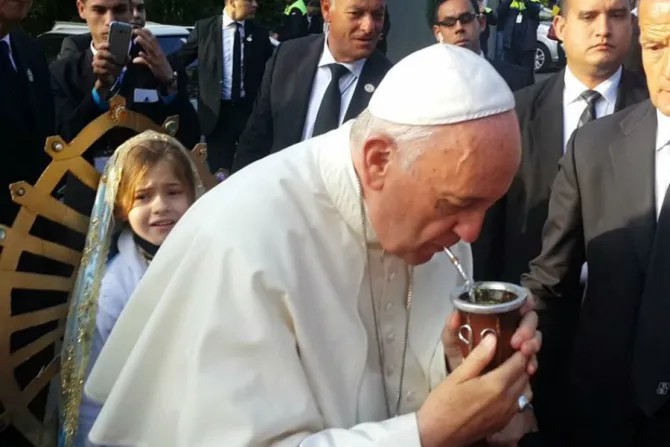Caacupé, Paraguay, Jul 19, 2015 / 05:01 am
On more than one occasion Pope Francis has been seen sharing a drink offered him by a pilgrim from Argentina: it's mate, a traditional infused drink popular in his native country and its neighbors.
Mate is the national infusion of Argentina, and is also associated with Our Lady of Caacupé, whose shrine Pope Francis visited in Paraguay on July 11.
The highly caffeinated beverage is served hot, traditionally in a hollowed gourd with a metal straw. Dried leaves of yerba mate (Ilex paraguariensis), a member of the holly family, are steeped in the hot water.
Yerba mate was first cultivated and used by the Guarani, an indigenous people of Paraguay and its neighbors. It was domesticated at the Jesuit Reductions in the 17th century, and the Society of Jesus was largely responsible for the spread of its consumption, through export – so much so that it became known as "the Jesuits' tea."
Yerba mate's association with Our Lady of Caacupé stems from a Guarani sculptor named José, who had converted to Christianity through the Jesuits.
He was once being pursued by a group of the Mbaya people, who had not abandoned their native religion. He vowed that if Mary would keep him from being caught by the Mbaya, he would carve and venerate an image of her.
Mary then appeared to José, telling him "ka'aguý cupe-pe", Guarani for "behind the yerba mate shrubs." He ran over and found a thick tree trunk, hiding himself behind it, and his pursuers ran on past him. José fulfilled his promise and carved the statue, and now Our Lady of Caacupé is the patroness of Paraguay.


